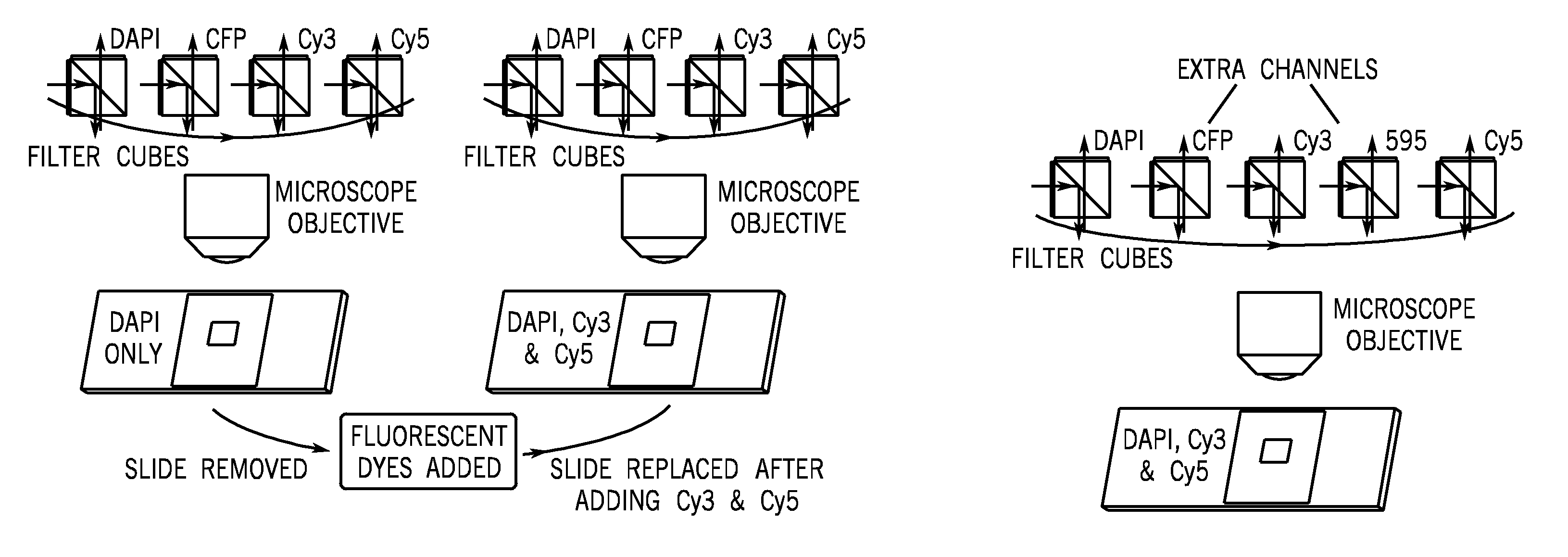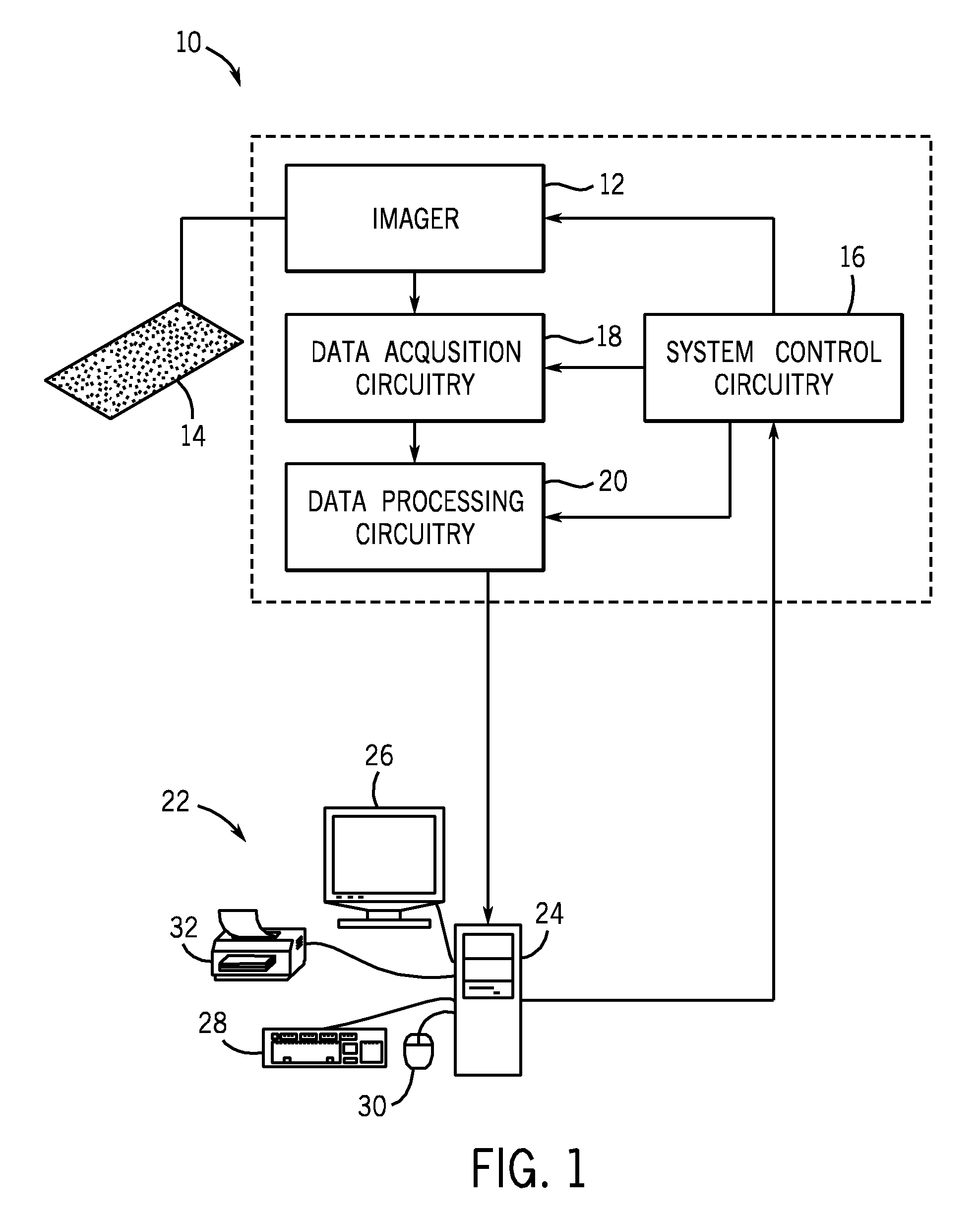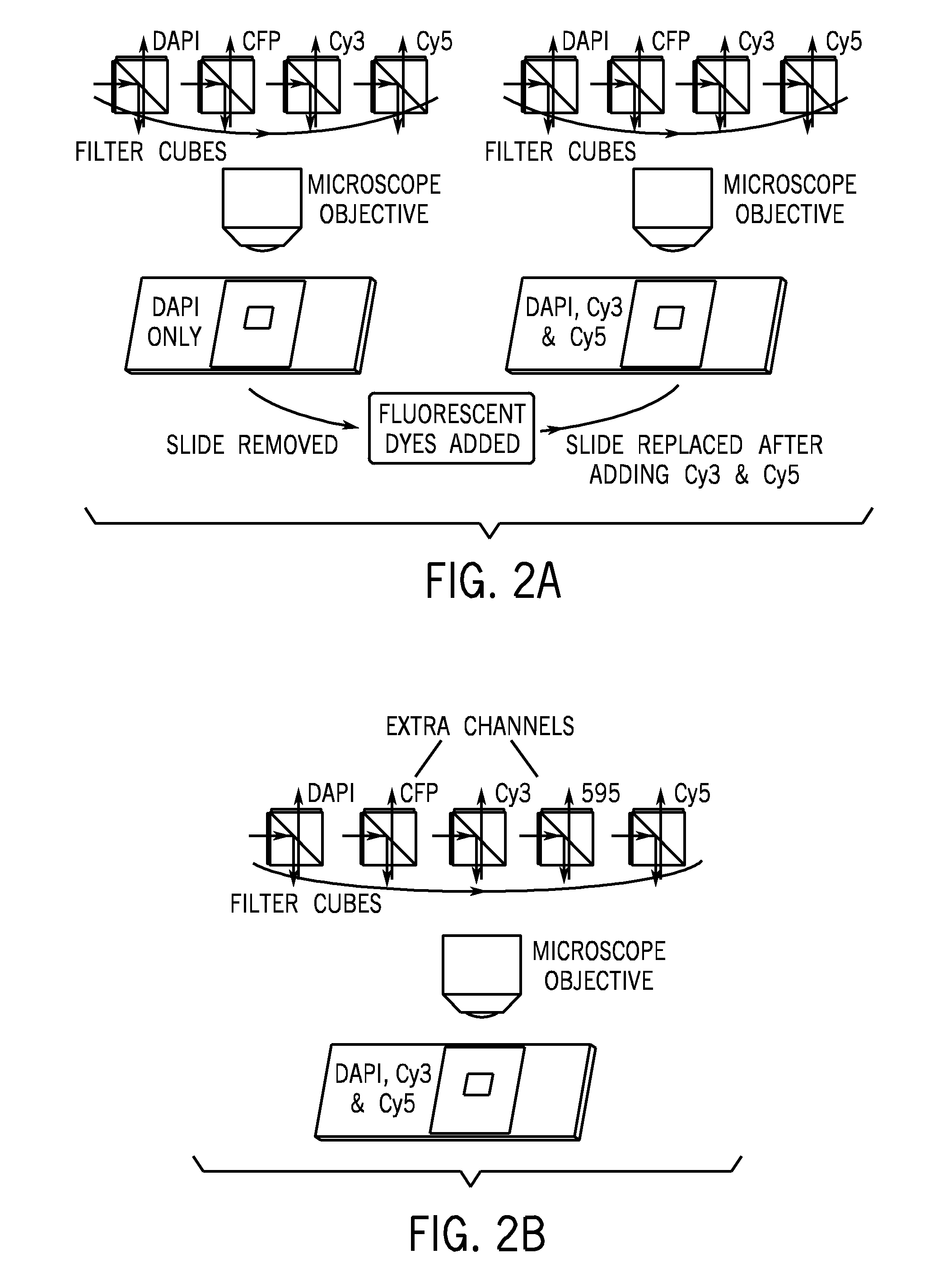Method and apparatus for removing tissue autofluorescence
a tissue and autofluorescence technology, applied in the field of tissue autofluorescence removal methods and apparatuses, can solve the problems of reducing the specificity of detection, affecting the analysis of images obtained of these cells, and affecting the detection accuracy of images, so as to remove autofluorescence and remove dark current noise.
- Summary
- Abstract
- Description
- Claims
- Application Information
AI Technical Summary
Benefits of technology
Problems solved by technology
Method used
Image
Examples
Embodiment Construction
[0021]The methods and systems of the present techniques may provide the advantage of improving image analysis for fluorescently stained images. Such techniques may preserve signal fluorescence while reducing or eliminating autofluorescence, as well as dark current. The techniques increase the resulting signal-to-autofluorescence ratio and the overall sensitivity of detection. These fully automatic systems and methods operate without user intervention and complicated and expensive instrumentation. The methods and systems are adaptable to a wide array of biological samples, including tissue micro arrays. However, they are not limited to use with tissue micro arrays and may be applied to any fluorescence imaging application.
[0022]The present techniques provide an automatic autofluorescence removal method for fluorescent spectroscopy, based on a realistic physical model. In one embodiment, the image processing technique provided herein uses a non-negative matrix factorization algorithm ...
PUM
| Property | Measurement | Unit |
|---|---|---|
| wavelengths | aaaaa | aaaaa |
| wavelengths | aaaaa | aaaaa |
| length | aaaaa | aaaaa |
Abstract
Description
Claims
Application Information
 Login to View More
Login to View More - R&D
- Intellectual Property
- Life Sciences
- Materials
- Tech Scout
- Unparalleled Data Quality
- Higher Quality Content
- 60% Fewer Hallucinations
Browse by: Latest US Patents, China's latest patents, Technical Efficacy Thesaurus, Application Domain, Technology Topic, Popular Technical Reports.
© 2025 PatSnap. All rights reserved.Legal|Privacy policy|Modern Slavery Act Transparency Statement|Sitemap|About US| Contact US: help@patsnap.com



